Effects of processing on phytochemicals in fruits and vegetables
The FAVORDENONDE project is focussing on the quality of products deriving from the processing chain. Special attention is paid to local varieties, and to simple and small processing facilities.
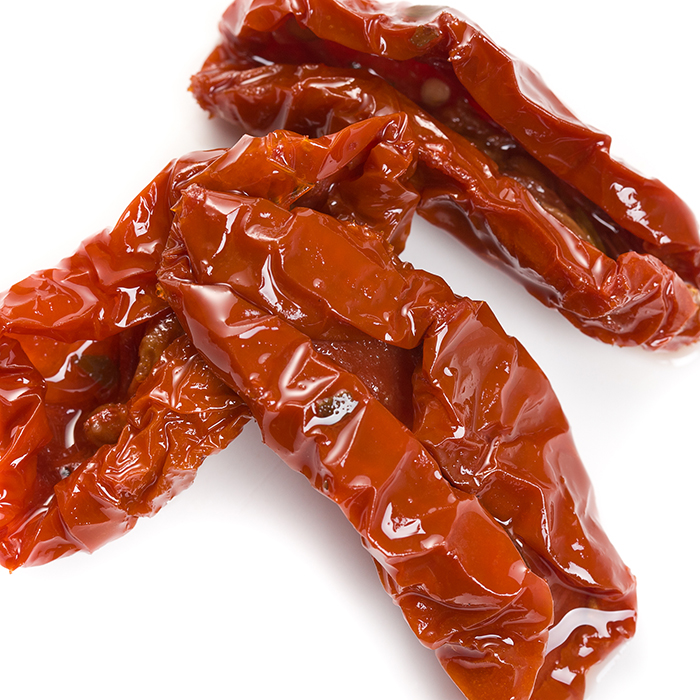
In the first year, the content of phytochemicals in tomatoes and apples were compared. While for the fresh products no differences between organic and conventional were found, the content of phytochemicals differed for processed products and when different processing techniques were compared.
How are different processing techniques affecting specific quality traits of fruits and vegetables? Does home-made food processing, made in small quantities and with high quality raw material, lead to a better sensory and nutritional quality of the processed food product than “industrially” processed food?
These are some of the questions FAVORDENONDE wants to answer.
Findings of the first project year

Fig. 1: Tomatoes from Italy: Raw fruits and dried products (Photos by CREA-IAA).
Figures 2a and 2b show the content of phenols and of carotenoids in organically and conventionally grown tomato, before and after processing (drying). As expected, the level of phenols was higher in fresh tomatoes, with comparable amounts in conventional and organic tomatoes. The content of phenols decreased significantly in sun-dried tomatoes. However, the content of phenols was higher in dried organic tomatoes compared to dried conventional ones. Conversely, the content of carotenoids tends to increase when the tomatoes are dried. While carotenoid retention after tomato processing is well known in the literature, the unexpected difference in phenol content of dried tomatoes is still under investigation.
Figure 2c compares the antioxidant capacity, which is mainly related to the phytochemical content of fruits, of organic apple juice among three different juice processing techniques: rack-press (home-made); belt-press (industrial); water-press (innovative small-scale). A significant difference was found in juice samples obtained by rack-press, where the antioxidant capacity and the phenol content were found to be reduced compared to belt- and water-press. This result was expected, since the colour of apple juices obtained by rack-press was noticeably darker than those obtained by belt- and water-press. The dark colour in apple juice is due to the enzymatic formation of pigments derived from oxidized phenols. This enzymatic activity is commonly induced after tissue disruption, which is most enhanced by rack-press processing.
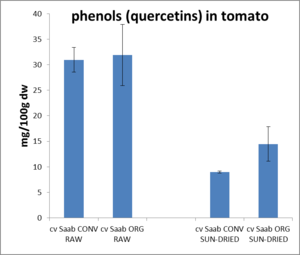
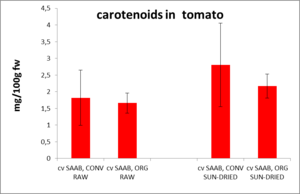
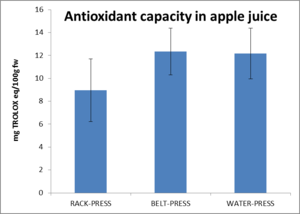
Fig. 2: Content in phenols (a) and carotenoids (b) in
raw and sun-dried conventional and organic tomatoes.
Antioxidant capacity in organic apple juices obtained by
different pressing techniques (c). (Source by CREA-IAA).
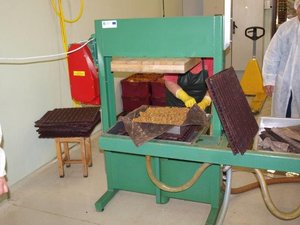
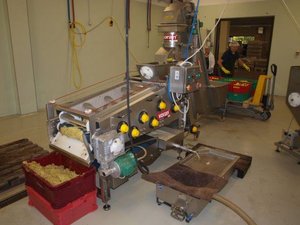
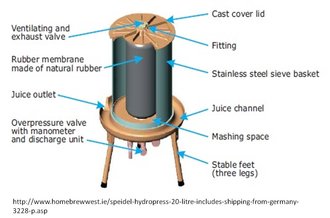
Fig. 3: Different apple pressing techniques:
home-made (rack-press) processing (a),
industrial (belt-press) processing (b) and
innovative small-scale (water-press) processing (c)
(Photos by Estonian University of Life Sciences and by CREA-IAA).
Outlook
The work is continuing with studies on desired traits such as sensory and metabolomic analyses, as well as studies on the molecules responsible for the recently described tastes "umami" and "kokumi". Moreover, work is in progress on "undesired" traits: allergen content and mycotoxin dosage.
More about the project
Visit the project website of FAVORDENONDE or mieri.entecra.it
Authors
Roberto Lo Scalzo, CREA-IAA, Italy, roberto.loscalzo@crea.gov.it
Ulvi Moor, EMU, Estonia, Ulvi.Moor@emu.ee
Eivind Vangdal, NIBIO, Norway, eivind.vangdal@nibio.no
Ulla Kidmose, AU-FOOD, Denmark, ulla.kidmose@food.au.dk
Wilfried Schwab, TUM, Germany, wilfried.schwab@tum.de
Gabriele Campanelli, CREA-ORA, Italy, gabriele.campanelli@crea.gov.it
Giovanna Speranza, UNIMI, Italy, giovanna.speranza@unimi.it